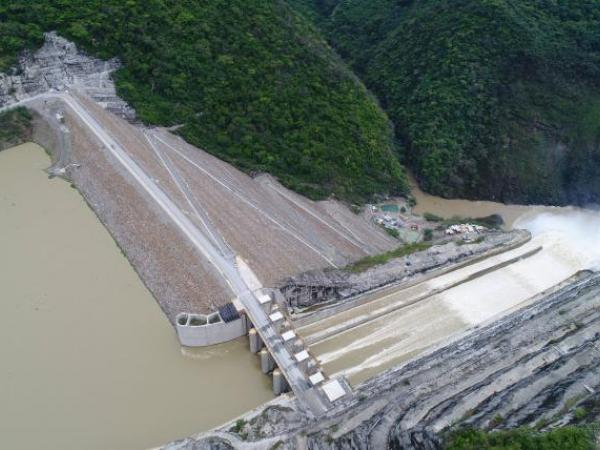The Ituango Hydroelectric Plant (Hisroituango) achieved reach one of the most important technical milestones in the development of its engineering by definitively cover the auxiliary diversion gallery (GAD)where on April 28, 2018 the contingency began.
(Hidroituango would not be able to start operating on July 26).
“Thanks to high engineering work, we closed the GAD. Thus, we were able to mitigate a risk for the communities located downstream of the dam and we took a new step in that goal of starting to generate energy with the first two units in the second half of 2022”, highlighted Jorge Andrés Carrillo Cardoso, general manager of EPM.
(Hidroituango, prepared for the first rainy season of 2022).
For his part, William Giraldo Jiménez, Vice President of Power Generation Projects at EPM, indicated that “the plugging of this tunnel gives us peace of mind. This was the structure that collapsed and caused the contingency downstream of the dam and leaving it permanently out of service is great news for the communities and for the stability of Hidroituango”.
THE WORKS
Through a statement, EPM points out that closing the GAD was not an easy task, since it was naturally clogged, with the risk that it would be unclogged naturally at any time. In December 2019, the 300-ton gates for each branch were lowered, which allowed prior plugging. Despite this barrier, at least 8 m3 of water per second continued to pass through a direct discharge system installed in the upper part of the gates, a considerable quantity that did not allow safe access for machinery and personnel in the place.
“To circumvent the situation, a maneuver called bypass was developed, which consisted of installing a piping system that allowed the water that entered through the GAD to be diverted to the intermediate discharge and, from there, to the spillway bowl to rejoin downstream to the normal course of the Cauca River”, highlights the note.
(‘A delay in Ituango does not put the energy system at risk’).
At the beginning of 2022, once this part of the GAD was dry, the auxiliary gates (right and left) were accessed to build the two concrete plugs, 23 meters long and 14 meters high. This work, due to its due environmental management, precision and atmospheric conditions to obtain a good setting of the concrete, took four months and merited throughout this last time, the effort and dedication of approximately 600 collaborators, including EPM officials and their contractor companies. .
WHAT IS IT AND WHY WAS THE GAD BUILT?
The GAD was built to divert the waters of the Cauca River while the two original diversion tunnels were technically and definitively plugged. For nearly four years, these two tunnels fulfilled their purpose, from February 2014, when the waters of the Cauca River were diverted, until the end of 2017 and the beginning of 2018, when work began on their definitive plugging, at which time the river was diverted by the GAD.
The construction of the GAD began in October 2015 and entered service in September 2017, and by then it was operating in parallel with the right diversion tunnel. This allowed the technical and definitive plugging of the left diversion tunnel. In March 2018, when the process of pre-plugging the right tunnel began, the flow of the Cauca River continued to flow only through the auxiliary diversion tunnel, GAD.
This auxiliary tunnel, therefore, was designed and built for temporary use. It was planned to operate only from September 2017 to July 2018, when it was planned to start filling the reservoir. From there it would be closed permanently. Its operation was interrupted as of April 28, 2018 when it became clogged and opened naturally on several occasions, which caused sudden flooding downstream and the destruction of the two closure gates that were already installed at that point.
The GAD was the tunnel that originated the contingency, a work front that generated a high risk in the event of a new unblocking naturally, achieving its definitive closure while the reservoir already existed was an important challenge for EPM, ostensibly reducing the risks for the communities downstream and very positive news for the technical progress of Hidroituango and what will be this year the entry into operation of its first two power generation units.
BRIEFCASE

















